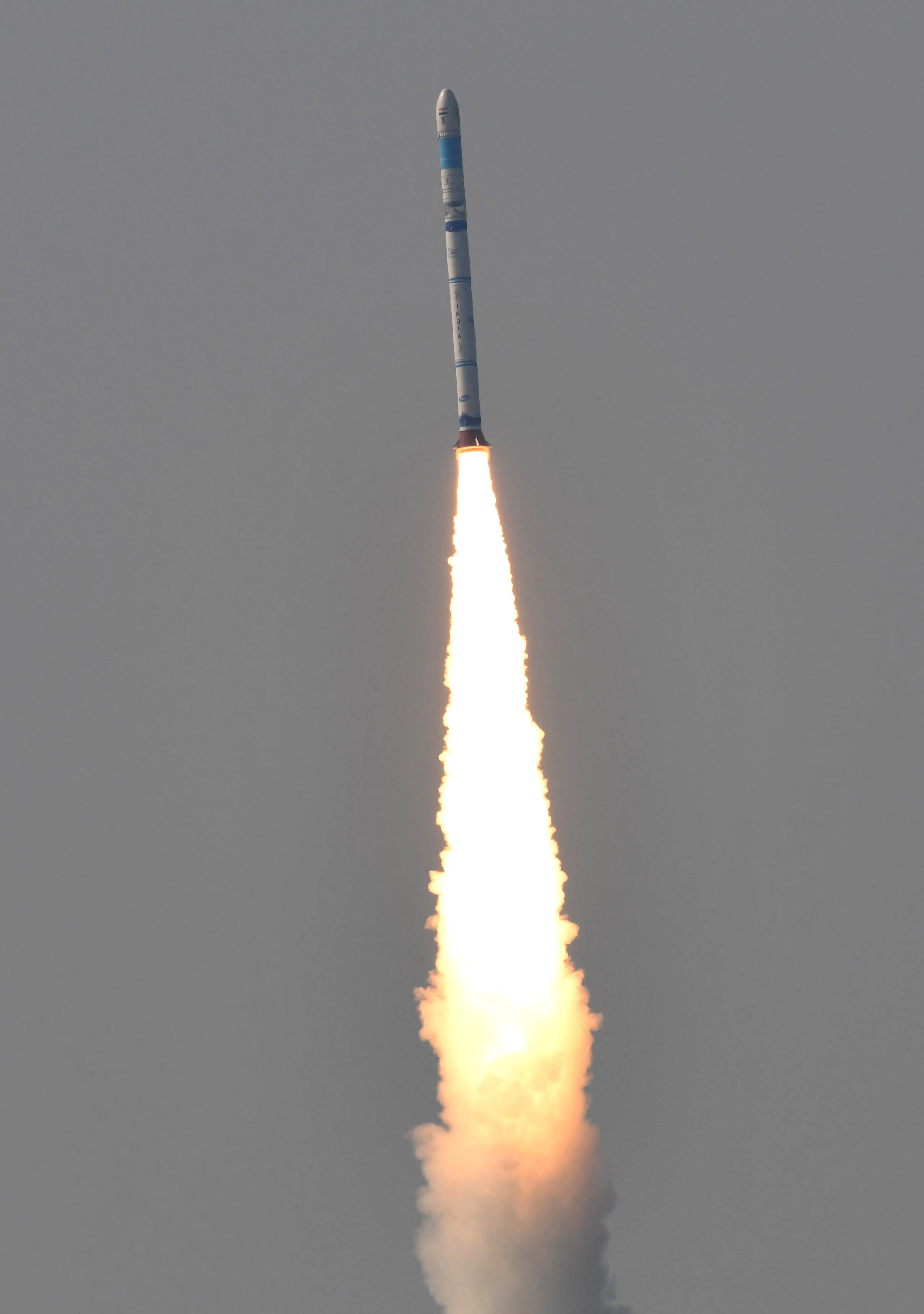India successfully launches SSLV-D2
- Karthik Naren
- Feb 10, 2023
- 4 min read
In a second test flight, the rocket put three satellites into orbit

On Friday, February 9, 2023, the Indian Space Research Organization (ISRO) successfully launched the SSLV – Small Satellite Launch Vehicle , SSLV-D2, which put three satellites into orbit. The launch, which took place at 09:18 IST (03:48 GMT) from the Satish Dhawan Space Center in Sriharikota, and information about the satellites was broadcasted live on ISRO TV channels. The rocket launched the Indian satellite EOS-07, the American Janus-1 and one produced by space startup in Chennai; SpaceKidz, the AzaadiSAT-2. The devices were successfully launched into a circular orbit at an altitude of 450 km. This was SSLV's second release. The first took place on August 7, 2022, but was unsuccessful: the rocket placed several satellites in an elliptical orbit instead of a circular one, so the satellites could not be used. ISRO then issued a statement that it would soon prepare a new version of the launcher.
The three-stage rocket (plus a pitch adjustment module) placed the satellites in a 450 km circular orbit, inclined at 37.2 degrees; launch azimuth was 135 degrees. EOS 07 entered a 444 x 461 km orbit, with a period of 93.63 minutes and an inclination of 37.20 degrees; the VTM stage (speed control module) was established at 357 x442 km, period of 92.56 and inclination of 37.21 °.
The new small launch vehicle is designed to launch satellites into low earth orbit at competitive prices. Its development by India's space agency aims to strengthen the South Asian country's position in the global space launch market.
The discrepancy may be due to the presence of other undisclosed payloads on board, and the list of objects tracked in orbit showed:
55562(23019A) 37.2° 460.7×443.9
55563(23019B) 37.2° 446.6×
434.9 55564(23019C) 37.2° 442.5×357.5
55565(23019D) 37.2° 448.5×381.4
55566(23019E) 37.2° 451.2×387.2 55567
(23019F) 37.9° 450.0×383.3 55568(23019G) 40.2
° 49.2° 47.2°
Two of which could be the VTM trajectory fine-tuning stage and the Equipment Bay (EB) equipment bay.

The rocket is capable of 500 kg low-orbit 'launch on demand' with low cost, low turnaround time and flexibility to accommodate multiple satellites and requires minimal launch infrastructure. The rocket is 34 meters long, 2 meters in diameter, and has a launch mass of about 119 tons. It has three stages of solid propulsion and a 'terminal velocity module' (high precision aiming upper stage).
Launch Photos of SSLV-D2 (ISRO)
Modifications for the second flight
Separation System Change – The separator mechanism has been modified for smoother actuation, and structural changes to more quickly dampen excessive oscillation. The flight logic was also modified, mainly relying on accelerometers to recover after initial transients and allowing the VTM to function in some circumstances that may not harm the mission in case of ascent failures. The separation system between the second and third stages was based on a circular expandable bellows system that shears the rivets and provides axial separation speed. This system has been replaced by the proven Marman band system for separation and springs to provide axial separation with speed. The new system generates less shock and is already used. The logic in the inertial equipment in the Fault Detection & Isolation (FDI) system based on the accelerometer threshold has been modified to evolve a more realistic approach based on the data generated through system level tests, built-in separation tests and flight. The check of the accelerometer residual logic in the Inertial Navigation System (INS) has been modified to deal with transient events. The moving average window has been modified so that, in case of failure of several sensors in the MINS, a longer duration check is implemented before setting the save mode. FDI) based on accelerometer threshold has been modified to evolve a more realistic approach based on data generated through system level testing, integrated separation testing, and flight. The check of accelerometer residual logic in the Inertial Navigation System (INS) has been modified to handle transient events. The moving average window has been modified so that, in case of identification of failure of several sensors in the MINS, a longer duration check is implemented before setting the save mode. FDI) based on accelerometer threshold has been modified to evolve a more realistic approach based on data generated through system level testing, integrated separation testing, and flight. The check of accelerometer residual logic in the Inertial Navigation System (INS) has been modified to handle transient events. The moving average window has been modified so that, in case of identification of failure of several sensors in the MINS, a longer duration check is implemented before setting the save mode.
The dynamic characterization and structural design modification was adapted
in the equipment bay assembly (Equipment Bay – EB) and the satellite together with the VTM stage and the modified structural design to increase the frequency of the structures. Modifications to the EB and satellite decks were implemented to minimize the response to the observed excitations.
NaVIC – in the event of a failure of the inertial system sensors, the mission will proceed using NavIC navigation data in a closed-loop guidance scheme. The VTM stage will have a loop to rescue mode: in case of failure of inertial sensors and unavailability of data from the Indian satellite navigation system NavIC (for more than 10 seconds), an open loop heading guidance will be performed. The propulsive capacity of the VTM will be considered in this rescue mode as well and the propellants will be operated to guarantee the minimum perigee necessary for the mission.












コメント